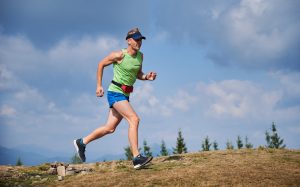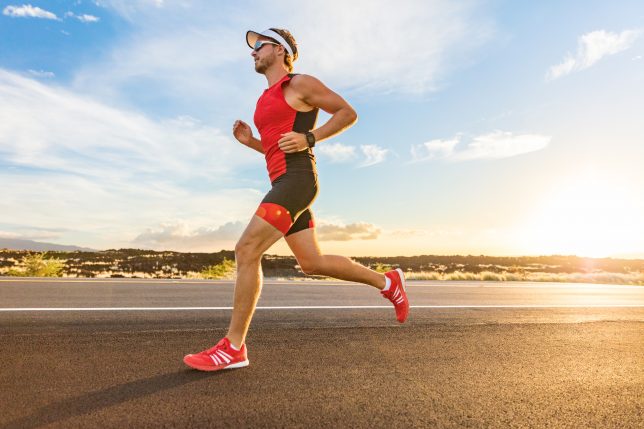Home>Shop by Feature>Design: Best Running Shorts>What Do Runners Wear When Running? A Detailed Insight


Design: Best Running Shorts
What Do Runners Wear When Running? A Detailed Insight
Modified: August 18, 2023
Gain a detailed insight into what runners wear when running. Gain valuable insights into the attire that runners rely on for optimal comfort, functionality, and style during their running sessions.
Running is a popular form of exercise that has been embraced by millions of people worldwide. It’s a fantastic way to stay in shape, relieve stress, and even connect with a community of like-minded enthusiasts. One crucial aspect of this pursuit is the choice of clothing. Whether you’re a seasoned runner or a beginner, it’s essential to wear the right attire when hitting the road, track, or trail.
The Basics: Running Tops and Bottoms
Running Tops
The kind of running top you wear will primarily depend on the weather and your personal comfort. Most runners opt for tops made of technical fabric designed to wick sweat away from the body, keeping you dry and comfortable. Here are the common types of running tops:
- Running T-Shirts: These are perfect for mild to hot weather conditions. They’re usually made from lightweight, breathable materials and come in both short and long-sleeved options.
- Running Tanks or Singlets: These sleeveless tops are a favorite during hot summer runs due to their minimal coverage and maximum ventilation.
- Running Long Sleeves: A long-sleeved running top is ideal for cooler days when extra coverage is needed but a jacket is too much.
- Running Jackets: For cold, windy, or rainy weather, a running jacket becomes necessary. It provides warmth and protects you from the elements.
Running Bottoms
Running bottoms should offer comfort, freedom of movement, and functionality. The most commonly worn running bottoms include:
- Running Shorts: Most runners prefer shorts for warm-weather runs. They’re typically lightweight, breathable, and designed to minimize chafing. Varieties include split shorts, v-notch shorts, and longer compression-style shorts.
- Running Tights or Leggings: When the temperature drops, many runners opt for tights or leggings. They offer more coverage and can help keep your muscles warm. Some even provide compression for added muscle support.
- Running Pants: These are a less common choice, usually reserved for colder weather or runners who prefer a looser fit than leggings provide.
Footwear: The Importance of Running Shoes
Choosing the right running shoes is crucial. They can make a significant difference in your comfort and performance, as well as protect you from injury. The best running shoe for you depends on your foot type, stride (also known as your gait), and the type of running you do (trail, road, or track).

Image from Adobe
Running Socks
A good pair of running socks can prevent blisters and keep your feet comfortable. Use socks made from moisture-wicking material to keep your feet dry, and that fit well to avoid slipping or bunching.
The Extras: Hats, Gloves, and More
Depending on the weather, runners might also wear hats or headbands to protect against sun exposure or retain heat in the winter. Gloves are important in cold weather to prevent your hands from freezing. Some runners also wear arm sleeves for warmth or compression. In the dark, reflective gear and lights are critical for safety.
Conclusion
The key to a good run lies in the preparation, and choosing the right clothing is part of that process. What runners wear when running can range from simple t-shirts and shorts to more specific gear like compression leggings and moisture-wicking tops. Footwear is an area that requires particular attention due to its direct impact on performance and injury prevention. Above all, comfort is king. Choose clothes that feel good and work for you, because the last thing you want to worry about on a run is what you’re wearing.
FAQs
Why do runners wear tight clothes?
Tight clothes can reduce drag and chafing, offer compression support, and help keep the body warm during colder runs.
Is it better to run in shorts or leggings?
It largely depends on the weather and personal comfort. Shorts are typically preferred in warmer climates while leggings offer more protection in colder temperatures.
What kind of shoes should runners wear?
The choice of running shoes should depend on the runner’s foot type, gait, and running surface. You should get fitted at a specialty running store to find the best shoe for your needs.
Do I need to wear special socks for running?
Special running socks can prevent blisters and offer additional comfort. They wick away moisture and provide a snug fit to prevent slipping.
Is it necessary to wear a hat while running?
Wearing a hat can protect your head from sun exposure during summer and retain heat during winter runs. However, it’s not a necessity and largely depends on the runner’s preference and weather conditions.